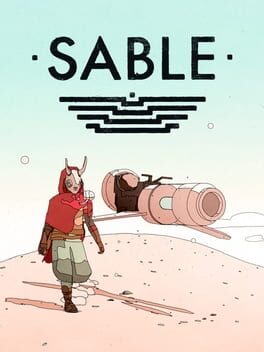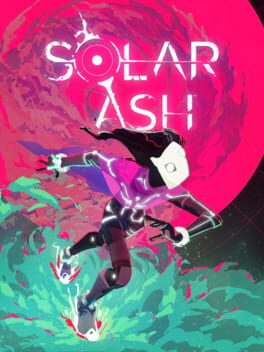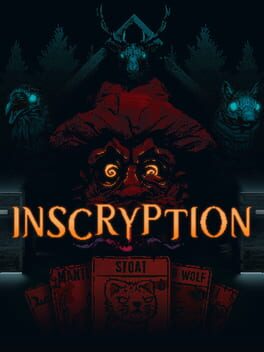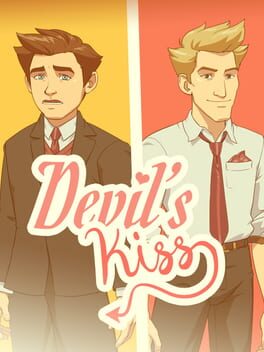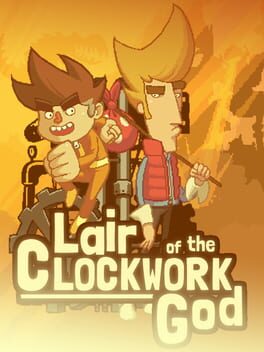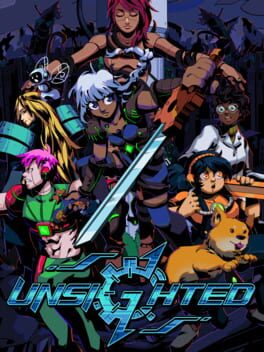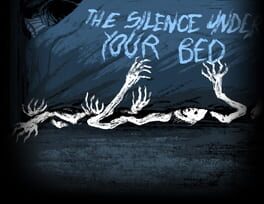nex3
BACKER
2015
When I first played Bloodborne, I appreciated it for what it was (an eldritch entanglement of orgasmic despair) while also quietly thinking that this was not a game I was likely to replay. I'd seen the sights and fought the fights, and while there were a few great bosses there were many more hulking beasts whose battles I didn't particularly care for.
My first playthrough was hot off Dark Souls 3 and still chasing the high of Sekiro the year before. All I wanted were those rhythm-game deflects, memorizing movesets and executing perfect counters, a clockwork dance of nerve and sword. With a few exceptions that wasn't what Bloodborne was about, and while I made my peace with that I couldn't bring myself to love it.
Flash forward a year and a half. By this point, I'd played my way backwards through the Soulslike oeuvre and beaten Sekiro two more times. As I watched over a friend's virtual shoulder during his first Bloodborne playthrough, and I felt the bloodlust rise within me. I wanted to sink my teeth in once again. And more than that, I wanted to do it differently: eschewing the parry-and-blade build I'd made a tradition of playing across all these games for my first go at a real heavy weapon.
So began my NG+ playthrough, not with a bang but with the buzz of my Whirligig Saw. It turned out that the beast bosses I'd dismissed in 2020 were a delight in 2022 with a deeper understanding of the form and the devil-may-care attitude of a player whose beaten them before and knows she will again. And as the sun rose for a third time over Yharnam, it was all I could do to keep myself from diving straight back in to NG++.
My first playthrough was hot off Dark Souls 3 and still chasing the high of Sekiro the year before. All I wanted were those rhythm-game deflects, memorizing movesets and executing perfect counters, a clockwork dance of nerve and sword. With a few exceptions that wasn't what Bloodborne was about, and while I made my peace with that I couldn't bring myself to love it.
Flash forward a year and a half. By this point, I'd played my way backwards through the Soulslike oeuvre and beaten Sekiro two more times. As I watched over a friend's virtual shoulder during his first Bloodborne playthrough, and I felt the bloodlust rise within me. I wanted to sink my teeth in once again. And more than that, I wanted to do it differently: eschewing the parry-and-blade build I'd made a tradition of playing across all these games for my first go at a real heavy weapon.
So began my NG+ playthrough, not with a bang but with the buzz of my Whirligig Saw. It turned out that the beast bosses I'd dismissed in 2020 were a delight in 2022 with a deeper understanding of the form and the devil-may-care attitude of a player whose beaten them before and knows she will again. And as the sun rose for a third time over Yharnam, it was all I could do to keep myself from diving straight back in to NG++.
I don't really play many RPGs. Certainly in terms of classic turn-based menu-oriented RPGs all I have under my belt are a few generations of Pokémon, Golden Sun, and the first quarter of Chrono Trigger—most of which I played as a child. But my girlfriend talked me into playing this, and it turns out to be amazing.
More than anything else, Nocturne reminds me of deck-building games. The process of acquiring new demons, while Pokémonesque on the surface, differs substantially in the way it plays out in practice. Demons require much more XP to level than the protagonist, forcing the player to engage with the fusion mechanic. This in turn carries over skills, allowing the player to gradually craft synergistic teams while also reacting to new constraints in terms of available fusions and distinct strategies required by different bosses.
The game shines within battles as well. Its signature press-turn weakness/resistance system allows for complex sequencing of plays, and the dance of bufss, debuffs, and resets makes even weakness-free boss fights engaging.
By the end of the game, I was doing what I lovingly referred to as "ten-dimensional calculus", with dozens of fusion calculator tabs open in my browser trying to assemble the very best possible team to fight the notorious final boss of the secret ending. And in the end, my plan succeeded and I walked all over him. That's what I call videogames.
More than anything else, Nocturne reminds me of deck-building games. The process of acquiring new demons, while Pokémonesque on the surface, differs substantially in the way it plays out in practice. Demons require much more XP to level than the protagonist, forcing the player to engage with the fusion mechanic. This in turn carries over skills, allowing the player to gradually craft synergistic teams while also reacting to new constraints in terms of available fusions and distinct strategies required by different bosses.
The game shines within battles as well. Its signature press-turn weakness/resistance system allows for complex sequencing of plays, and the dance of bufss, debuffs, and resets makes even weakness-free boss fights engaging.
By the end of the game, I was doing what I lovingly referred to as "ten-dimensional calculus", with dozens of fusion calculator tabs open in my browser trying to assemble the very best possible team to fight the notorious final boss of the secret ending. And in the end, my plan succeeded and I walked all over him. That's what I call videogames.
2021
2021
An ambitious, janky, beautiful, frustrating game. When the movement works, it feels marvelous, gliding through levels with a gripping sense of momentum, pausing time and cracking heads as you go. But you can lose that momentum just by hitting a corner of geometry wrong, and the game stumbles in similar ways. Enemies quickly become a matter of just trying to guess when you're in the radius that a grapple autokill will work, and exploration turns into trying to figure out mapless exactly which cloudy enclave you might have left unviewed.
The bosses are the worst part by far. They ask the player to navigate between waypoints at a breakneck pace, which could be exciting if it were less repetitive and failures felt earned. But instead, any hiccup of geometry dooms a run and pushes the player out to scavenge up another shield box and try again.
The bosses are the worst part by far. They ask the player to navigate between waypoints at a breakneck pace, which could be exciting if it were less repetitive and failures felt earned. But instead, any hiccup of geometry dooms a run and pushes the player out to scavenge up another shield box and try again.
2021
The production quality here is really impressive, especially now that there's full voice acting. The game itself is enjoyable enough--the way you can nudge Jenny's personality through dialog options that are more about selecting a mood than a specific phrase is a good system, but the writing and characterization isn't quite strong enough to bear up under that system. The mainline puzzles are generally a little more straightforward than I'd like, although that's more than made up for by the obtuseness of the optional puzzles.
As much as I appreciate the optional puzzles in the game, they hinge so much on finding particular objects and areas in the game that you'll almost certainly have to backtrack to find something you missed. And the game's frequent unskippable cutscenes, puzzles, and dialog moments--while fun the first time through--make it extremely frustrating to go back to a specific nook and grab a stray postcard piece or whatever.
As much as I appreciate the optional puzzles in the game, they hinge so much on finding particular objects and areas in the game that you'll almost certainly have to backtrack to find something you missed. And the game's frequent unskippable cutscenes, puzzles, and dialog moments--while fun the first time through--make it extremely frustrating to go back to a specific nook and grab a stray postcard piece or whatever.
2020
2014
I consider myself a pretty decent player of video games, and particularly of platformers. I could not make headway on this game on normal, I could barely make headway on easy, and by the time I lost my last life to a boss on double-easy I decided I'd had enough. Which is a bummer, because this game is intensely creative and bizarre and brilliant! Maybe one day I'll find a friend who's better at this stuff and make them play it while I watch.
2021
Slammed this start to finish in three days on normal, then immediately started a NG+ and got the true ending on hard mode. The extremely approachable Zeldaesque structure pairs perfectly with a combat system deep enough to rival any 2D game. Although the character progression doesn't operate in terms of levels and stats, it captures the RPG feeling of being able to choose between multiple builds to suit your playstyle or the needs of a particular fight.
The main thing that sticks in my craw a bit about this game is the timer system. I'm not going to say it's bad, because it certainly creates a strong emotional bond between you and the characters who are depending on your swift action to survive. But it does work at cross-purposes to the core search action loop of exploring every nook and cranny, which this game clearly encourages by hiding goodies everywhere. I ended my first playthrough much sooner than I really wanted to mostly because I didn't want all of my friends to die.
It's almost as though there are two different games here: the one in which you carefully balance time as a resource to keep your friends alive, and the one where you try to uncover everything. Fortunately the game allows you to disable the timers, and I think doing so makes the game different, not worse.
The main thing that sticks in my craw a bit about this game is the timer system. I'm not going to say it's bad, because it certainly creates a strong emotional bond between you and the characters who are depending on your swift action to survive. But it does work at cross-purposes to the core search action loop of exploring every nook and cranny, which this game clearly encourages by hiding goodies everywhere. I ended my first playthrough much sooner than I really wanted to mostly because I didn't want all of my friends to die.
It's almost as though there are two different games here: the one in which you carefully balance time as a resource to keep your friends alive, and the one where you try to uncover everything. Fortunately the game allows you to disable the timers, and I think doing so makes the game different, not worse.
2021
There is some magic in Slice & Dice, and I don't mean spells. At its best, it captures the sense of combinatorial wonder of a deckbuilder roguelike with a dramatically simpler structure. In my first winning run I went wild using a clever combination of classes and equipment to make a dozen mana a turn, and I was in hog heaven. The problem is, while there are certainly jewels of excitement there to mine, the player has almost no control over when and how they're accessed.
Here is the structure of the game. You begin with a D&D-style party of five characters each of whom has a selection of abilities. You fight waves of enemies, and after each wave you receive either a piece of equipment which provides some unique bonus or a level up for one of your characters. Each character has a range of level 2 and level 3 classes, each with a totally different set of abilities.
What this means is that your choices early in the game have essentially no bearing on the endgame. Early equipment is so weak as to be irrelevant, and the level 2 classes you choose have no bearing on which level 3 classes you have access to or which abilities they have. Any equipment you choose to optimize a midgame party will likely be suboptimal for the endgame.
This severely limits the replayability of the game. When the first 2/3s of the game have no bearing on the rest of it, it just becomes an elongated loading screen you have to get through before the real fun starts. Why not have classes exist in a tree, where level 3s are upgraded versions of level 2s that retain the core concepts? Why even have early-game equipment that's guaranteed to be worse to equip than not later on? This game could be great, but instead it is merely good.
Here is the structure of the game. You begin with a D&D-style party of five characters each of whom has a selection of abilities. You fight waves of enemies, and after each wave you receive either a piece of equipment which provides some unique bonus or a level up for one of your characters. Each character has a range of level 2 and level 3 classes, each with a totally different set of abilities.
What this means is that your choices early in the game have essentially no bearing on the endgame. Early equipment is so weak as to be irrelevant, and the level 2 classes you choose have no bearing on which level 3 classes you have access to or which abilities they have. Any equipment you choose to optimize a midgame party will likely be suboptimal for the endgame.
This severely limits the replayability of the game. When the first 2/3s of the game have no bearing on the rest of it, it just becomes an elongated loading screen you have to get through before the real fun starts. Why not have classes exist in a tree, where level 3s are upgraded versions of level 2s that retain the core concepts? Why even have early-game equipment that's guaranteed to be worse to equip than not later on? This game could be great, but instead it is merely good.
There were some solid stories in this, but it doesn't live up to the standard set by other Bravemule games. The structure has too much space to comfortably be filled by two writers, leaving stories (particularly Snow's) feeling repetitive and cheesy. The framing device, while kind of amusing the first time, became seriously annoying when going back to play through all the stories--particularly in the third playthrough where the player is forced to replay a story they've already seen. That said, Khaw's "The Necromancer's Blues" was an inventive use of the form, and Henderson's art was evocative throughout.


